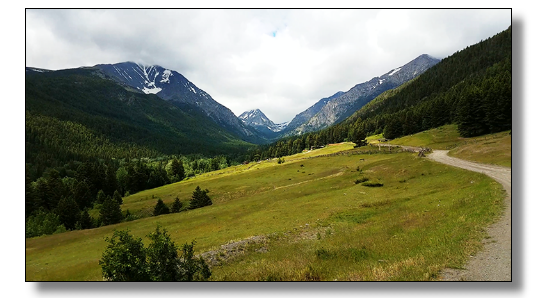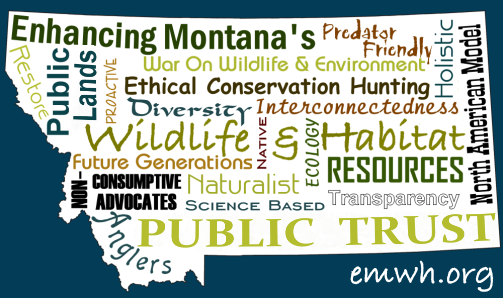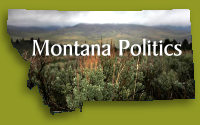
Repeal DOL's 81-2-120
Senate Bill 312, sponsored by Sen. Kenneth Mesaros, (R) SD 25 from Cascade, passed in 1995, which authorized DOL to take certain actions with respect to wild bison that enter the state and required FWP to cooperate with DOL in managing bison from YNP. Montana Code Annotated states: (1) Whenever a publicly owned wild buffalo or wild bison from a herd that is infected with a dangerous disease enters the state of Montana on public or private land and the disease may spread to persons or livestock or whenever the presence of wild buffalo or wild bison may jeopardize Montana's compliance with other state-administered or federally administered livestock disease control programs, the department may, under a plan approved by the governor, use any feasible method in taking one or more of the following actions: This law was passed when it was assumed, not
scientifically proven, that bison, known to carry the livestock
originating disease brucellosis, were the vectors for brucellosis
transmission - one bovine to another, to domestic cattle. There
has never been a documented case of brucellosis transmission in
the wild, from bison to domestic cattle. "Frustrated by the agencies' handling of the issue and believing their interests were not being addressed, a group of ranchers, conservationists, and hunters in Jackson Hole, Wyoming, wrote a letter to the Clinton administration in January 1997, in the midst of the crisis. They requested that APHIS stop threatening to downgrade the state's brucellosis-free status. Ranchers in Jackson Hole, they noted, had been running cattle next to bison for more than thirty years with no outbreaks of brucellosis." - Finding Common Ground, pg. 138, letter being foia'd. Since the advancement of science, genetics has shown that wildlife transmission of brucellosis to domestic cattle has occured from elk, whose genotype is almost identical to that of domestic cattle (separated by 1-2 mutations. The bison biovar is separated by about 20 mutations.) - "Our results indicate that elk and cattle isolates are virtually identical genetically, differing by only one to two mutational steps. On the contrary, bison B. abortus differed from cattle and elk by 12-20 mutational steps."- DNA Genotyping Suggests that Recent Brucellosis Outbreaks in the Greater Yellowstone Area Originated from Elk, 2009. The
North American Model of Wildlife Conservation states "6.
Science is the proper tool to discharge wildlife policy.
Wildlife management appears to be increasingly "The scientific mandate has been followed since, reinforced by the writings of Aldo Leopold and embedded within The Wildlife Society’s code of ethics in that TWS members 'recognize research and scientific management of wildlife and its environments as primary goals ...' " Based on the science, MCA 81-2-120 needs to be repealed, full jurisdiction of YNP bison entering Montana needs to be in the hands of the wildlife agency Fish, Wildlife & Parks, to be managed as wildlife. |
81-2-120. Management of
wild buffalo or wild bison for disease control. (1) Whenever a publicly
owned wild buffalo or wild bison from a herd that is infected with
a dangerous disease enters the state of Montana on public or private
land and the disease may spread to persons or livestock or whenever
the presence of wild buffalo or wild bison may jeopardize Montana's
compliance with other state-administered or federally administered
livestock disease control programs, the department may, under a
plan approved by the governor, use any feasible method in taking
one or more of the following actions: |
Kathryn QannaYahu
Your Advertisement Here |
Site designed and maintained by Kathryn QannaYahu




